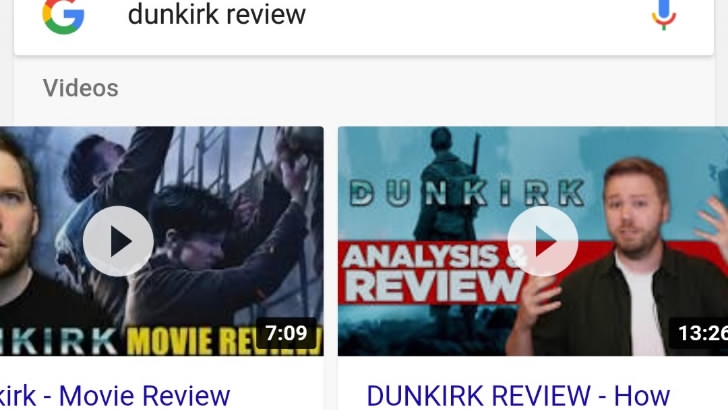
Tech & Sci
15:10, 19-Aug-2017
Google brings auto-playing video previews to mobile
By Xie Zhenqi

Google introduced a major update Saturday, with the new feature of allowing users to watch six-second video previews auto-played in search results on Google app and Chrome, both under iOS and Android operating system.
Whenever the keywords searched for have accompanied videos, Google shows the clips silently to help users determine if it's the one they wanted, thus saving them time from having to click onto each video.
Google displays previews for most of the videos on web, including, but not limited to, Youtube. However, such convenience may not be supported for some of the newest videos as it takes servers some to time to generate previews.

Google Photo
Google Photo
"We're always looking for ways to help you find information faster and easier," says Prashant Baheti, Product Manager at Google, "that’s why when you look up 'NBA draft recap,' for example, you've always seen short text snippets for each result."
"These text snippets help give you a snapshot of the site's content, making it easier to decide whether you'd like to click through to read more." He added.
Baheti also said that for videos Google has "traditionally shown a static image thumbnail in search results," but they are working to deliver users helpful glimpses, assisting them to find what they look for across the video carousel.

Reuters Photo
Reuters Photo
What's cool about this is that Google has applied its strength in machine learning to analyze the whole video and choose the six-second excerpt that's the most representative among all different scenes from start to the end.
This new feature also has the potential to fight click-bait. This is especially the case with some Youtubers uploading a misleading title and deceitful thumbnail for a video that does not match with the actual content, in order to lure viewers to click in so they can be paid for that.
What's more, the videos will only start playing previews when connected to Wi-Fi so users do not need to worry about extra costs for data usage. No ads will be shown at the beginning as well.
This feature is not yet available on desktop, as a Google spokesperson argues that they focus mainly on mobile users, but it may be brought across all platforms in the future.

Google Photo
Google Photo

SITEMAP
Copyright © 2018 CGTN. Beijing ICP prepared NO.16065310-3
Copyright © 2018 CGTN. Beijing ICP prepared NO.16065310-3